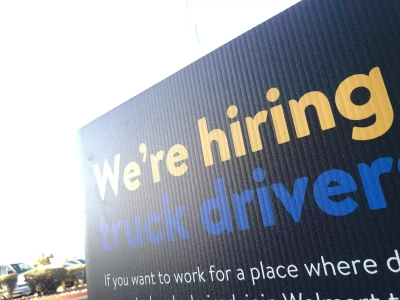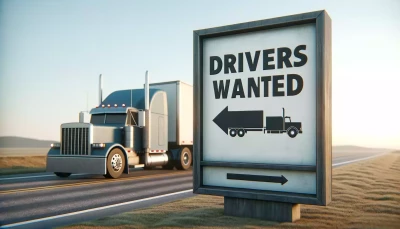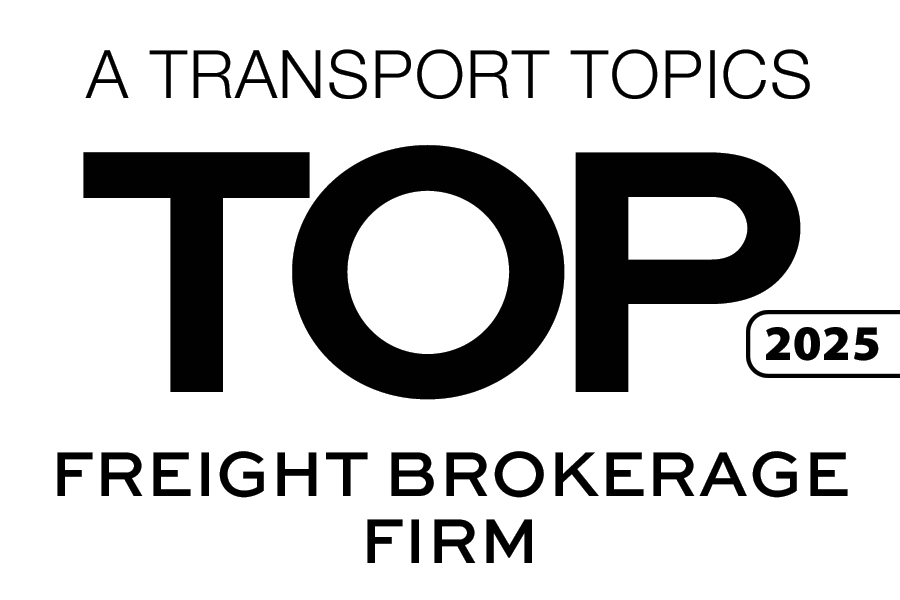Unraveling the Trucking Industry’s Driver Shortage
January 9, 2024
 The idea of a driver shortage has been a source of anxiety for several years in the transport field. However, the details surrounding this issue are more complex than you may expect. Is there truly a driver shortage, or is it a myth perpetuated by flimsy statistics and dubious economic practices?
The idea of a driver shortage has been a source of anxiety for several years in the transport field. However, the details surrounding this issue are more complex than you may expect. Is there truly a driver shortage, or is it a myth perpetuated by flimsy statistics and dubious economic practices?
Discovering the truth about the supposed driver shortage requires a candid exploration of the numbers. The perplexing range of statistics surrounding the total number of commercial drivers with CDLs adds to the mystery. In a workforce of approximately three and a half million drivers, just 150,000 are members of a trucking association like the OOIDA. These discrepancies highlight the challenge of obtaining an accurate count.
“From what we can tell, there’s no way of knowing how many owner-operators there really are,” explains OOIDA Executive VP Lewie Pugh. “We can look at the number of motor carriers to get some of an idea, but it’s a hard thing to measure.”
The distinction between CDL holders and those with Class A CDLs is crucial for understanding the landscape of over-the-road trucking. Despite diligent research efforts, obtaining a definitive count for the true number of Class A CDL holders remains challenging. This is a central concern, as Class A CDLs are integral to the truckload and over-the-road sectors. The absence of concrete data makes it difficult to grasp the true extent of the industry’s composition.
The dynamics of capacity within the trucking industry are also tied closely to the notion of a driver shortage. With 60% of capacity attributed to major carriers and the remaining 40% dispersed among smaller carriers and owner-operators, the complexity deepens. The industry’s makeup is further complicated by carriers leasing to owner-operators, making it difficult to pinpoint exact driver figures.
Is there more that businesses could be doing to prevent a driver shortage? Join the conversation in the latest episode of the Stay In Your Lane Podcast.
The crux of the matter is this – is there a driver shortage, or is this perception merely a byproduct of economic fluctuations? During periods of high demand and tight capacity, a true shortage becomes apparent. But the surplus of drivers leads to a perceived shortage that may not be accurate during economic downturns. The cyclical nature of the industry and the fluctuating demand for drivers contribute to this ongoing debate.
Drivers’ wages also have a role to play in the perceived driver shortage. A traditional economic perspective suggests that these false conclusions are a pay problem rather than a true driver shortage. The assertion is that if wages were competitive, the industry would attract and retain more drivers. The commoditization of drivers and their services stands as a significant hurdle, demanding a greater appreciation and respect for the crucial role drivers play in our society and within the workforce.
 “There’s not a driver shortage, there’s a driver pay shortage,” says Joe Lombardo, President, and Founder of Ege Avenue Associates. “If you pay, they’ll come. When you nickel and dime people to death, they leave the industry. Pay a good wage and you’ll have plenty of drivers.”
“There’s not a driver shortage, there’s a driver pay shortage,” says Joe Lombardo, President, and Founder of Ege Avenue Associates. “If you pay, they’ll come. When you nickel and dime people to death, they leave the industry. Pay a good wage and you’ll have plenty of drivers.”
From a critical standpoint, the trucking industry has been plagued by false narratives perpetuated to serve specific agendas. The driver shortage myth could simply be a means of keeping wages down and advancing regulatory agendas. The fallout from these narratives includes a high turnover rate and challenges in retaining skilled truckers. The need for a paradigm shift in how the industry perceives and values its workforce is long overdue.
“For far too long, people have pushed this driver shortage myth to keep wages down, push regulation, or cut out their competitors, and drivers are being used as a pawn” says Pugh. “When there’s a shortage, prices are supposed to go up. Drivers’ salaries have not kept up with inflation since the 1970s.”
As clouded perceptions about the workforce continue, the need for change in the transport industry grows stronger. Beyond the debates over numbers and shortages, a collective effort is required to address the root causes – fair pay, respect for drivers, and a commitment to training. Only through a holistic approach can the industry hope to overcome the persistent challenges and create a sustainable future for trucking professionals. For a partner who understands the difficulties carriers face today, call the 3PL professionals at Triple T Transport. We work hard to provide our partners at each level of the supply chain with the highest level of service and support.














